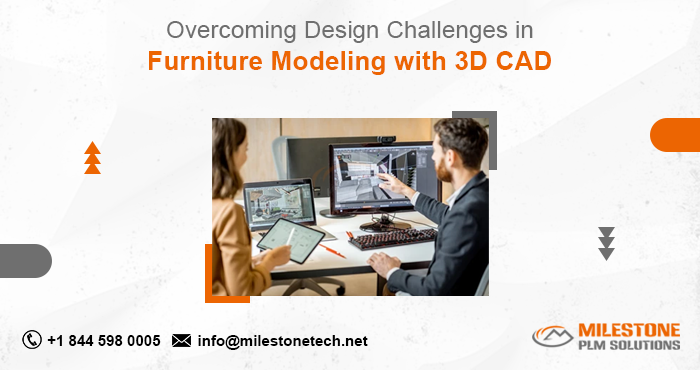Overcoming Design Challenges in Furniture Modeling with 3D CAD
- Milestone PLM Solutions
- Jan 16
- 2 min read
The furniture design industry is evolving rapidly, with increasing demand for innovative and ergonomic designs that align with modern aesthetics and functionality. However, creating high-quality furniture models is not without challenges. Designers often grapple with balancing creativity, precision, and efficiency, especially when catering to complex client requirements. This is where Furniture Modeling empowered by 3D CAD software becomes a game-changer.

Challenges in Furniture Modeling
Furniture designers face several hurdles in the design process:
Complex Geometries: Modern furniture designs often incorporate intricate shapes and unconventional forms, pushing the boundaries of traditional design methods.
Material and Texture Representation: Accurately visualizing different materials, textures, and finishes is crucial for understanding how the final product will appear.
Customization Needs: Today’s customers demand personalized designs that meet their specific tastes and spatial requirements, which can complicate the modeling process.
Prototyping Costs: Physical prototypes are expensive and time-consuming, especially when iterations are required to perfect the design.
Collaborative Efforts: Coordinating among designers, manufacturers, and clients to ensure everyone is on the same page can be challenging.
The Role of 3D CAD in Furniture Modeling
3D CAD (Computer-Aided Design) has revolutionized how designers approach furniture modeling by addressing these challenges effectively. Here’s how it helps:
Precision and Accuracy: 3D CAD tools enable designers to create highly detailed and accurate models. These tools support precise measurements, ensuring that the final design aligns with the intended dimensions and specifications.
Visualization and Rendering: With advanced rendering capabilities, designers can visualize furniture in different materials, colors, and lighting conditions, providing a realistic preview of the final product.
Streamlined Customization: CAD software allows for easy modifications, enabling designers to adapt models to specific customer needs without starting from scratch.
Efficient Iterations: Virtual prototypes created in 3D CAD significantly reduce the need for physical prototypes. Designers can test different configurations and aesthetics digitally, saving time and resources.
Enhanced Collaboration: Many 3D CAD tools support cloud-based workflows, making it easier for teams to collaborate in real-time. This ensures smooth communication between designers, engineers, and clients, minimizing misunderstandings.
Conclusion
Overcoming the challenges of Furniture Modeling requires the right blend of creativity and technology. 3D CAD software empowers designers to push the boundaries of innovation while maintaining efficiency and precision. By leveraging the advanced features of CAD tools, furniture designers can create stunning, functional, and customizable pieces that meet the diverse needs of today’s consumers.
As the furniture industry continues to evolve, adopting 3D CAD is no longer optional but essential for staying competitive and delivering exceptional designs. Whether you’re a seasoned designer or new to the field, embracing this technology will undoubtedly elevate your craft and streamline your processes.


